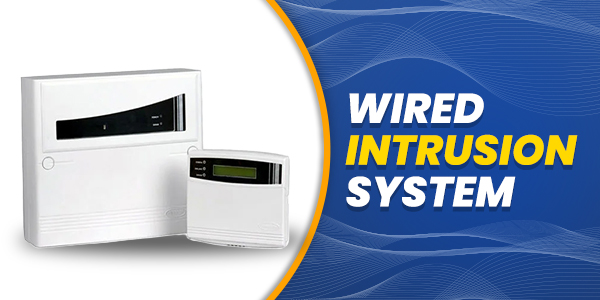In an ever-evolving landscape of security technologies, wired intrusion systems stand as stalwarts of protection, providing an essential shield against unauthorized access and potential threats. These systems have a rich history of development and have continually adapted to meet the changing needs of businesses and homeowners alike. In this blog post, we’ll explore the uses and purposes of wired intrusion systems, as well as their journey of mobilization and evolution.

Understanding Wired Intrusion Systems
Wired intrusion systems, also known as hardwired alarm systems, are a type of security system that relies on physical connections (wires) to transmit signals between various components, such as sensors, control panels, and alarms. These systems are renowned for their reliability and effectiveness in safeguarding property, assets, and lives.
Uses and Purposes of Wired Intrusion Systems
- Property Protection: Wired intrusion systems are primarily designed to protect homes, businesses, and facilities from unauthorized access, burglaries, and vandalism. They use sensors (e.g., door/window contacts, motion detectors) to detect intruders and trigger alarms.
- Fire Detection: Many wired intrusion systems are equipped with smoke detectors and heat sensors, providing early warnings in case of fire emergencies. This dual functionality enhances the safety of both people and property.
- 24/7 Monitoring: Wired systems can be connected to professional monitoring services. When an alarm is triggered, the monitoring center is immediately alerted, and they can dispatch appropriate authorities or respond accordingly, even when you’re away.
- Access Control: Some wired intrusion systems offer integrated access control features. This allows you to manage who can enter your property, restrict access to certain areas, and maintain an audit trail of entries and exits.
- Integration: These systems can often be integrated with other security components such as surveillance cameras, intercoms, and smart home devices, creating a comprehensive security ecosystem.
- Deterrence: The mere presence of visible wired intrusion system components, like sensors and alarm panels, acts as a powerful deterrent to potential intruders, reducing the likelihood of break-ins.
The Mobilization and Evolution of Wired Intrusion Systems
The journey of wired intrusion systems from their inception to the present day has been marked by significant milestones:
- Early Adoption: Wired intrusion systems have been around for decades, finding early use in commercial properties and government buildings where security was paramount.
- Residential Integration: As technology advanced, these systems became more affordable and accessible to homeowners, leading to widespread adoption in residential settings.
- Wireless Advancements: While wired systems have proven their reliability, they faced competition from wireless alternatives in recent years. However, wired systems remain in demand due to their resilience to interference and hacking.
- Smart Technology: Wired intrusion systems have embraced smart technology, allowing for remote monitoring and control through smartphone apps. This has enhanced their usability and convenience.
- Integration with IoT: Wired systems now seamlessly integrate with the Internet of Things (IoT), offering advanced automation and control capabilities.
- Enhanced Security Features: Continuous research and development have led to improved detection accuracy and reduced false alarms, making these systems more effective than ever.
In conclusion, wired intrusion systems continue to serve as the bedrock of security for homes, businesses, and critical facilities. Their journey of mobilization and evolution demonstrates their adaptability and enduring relevance in a world where security is paramount. As technology continues to advance, we can expect wired intrusion systems to remain at the forefront of protecting what matters most.
This article was developed on velacctv.com
